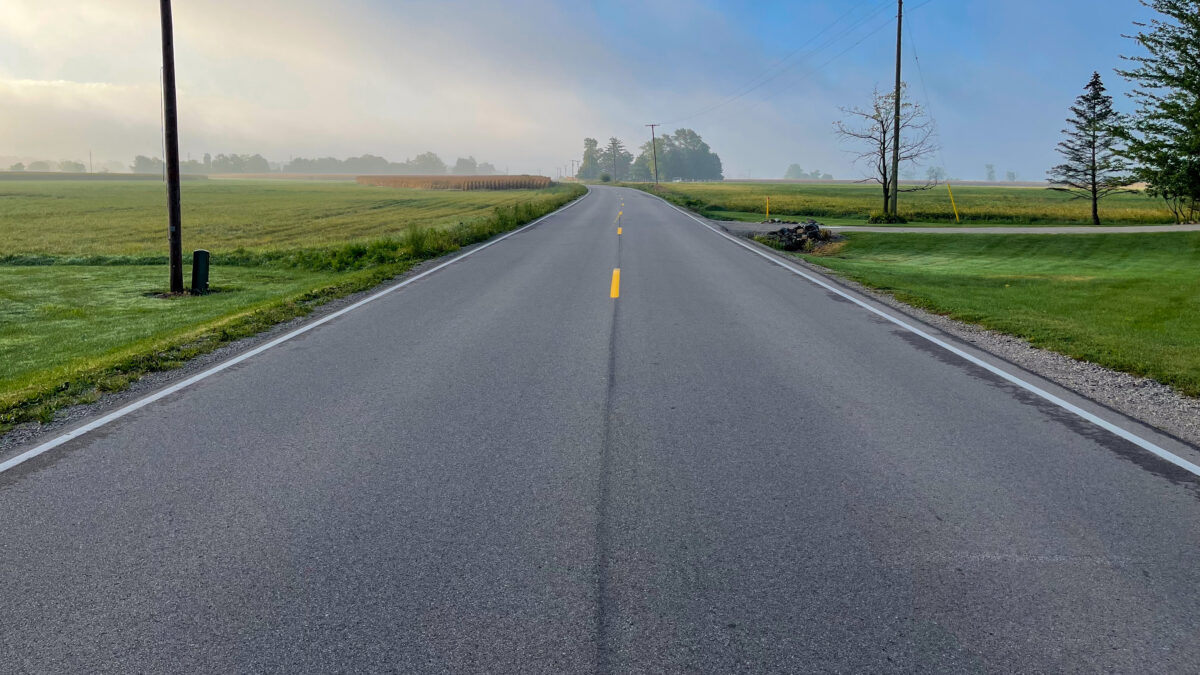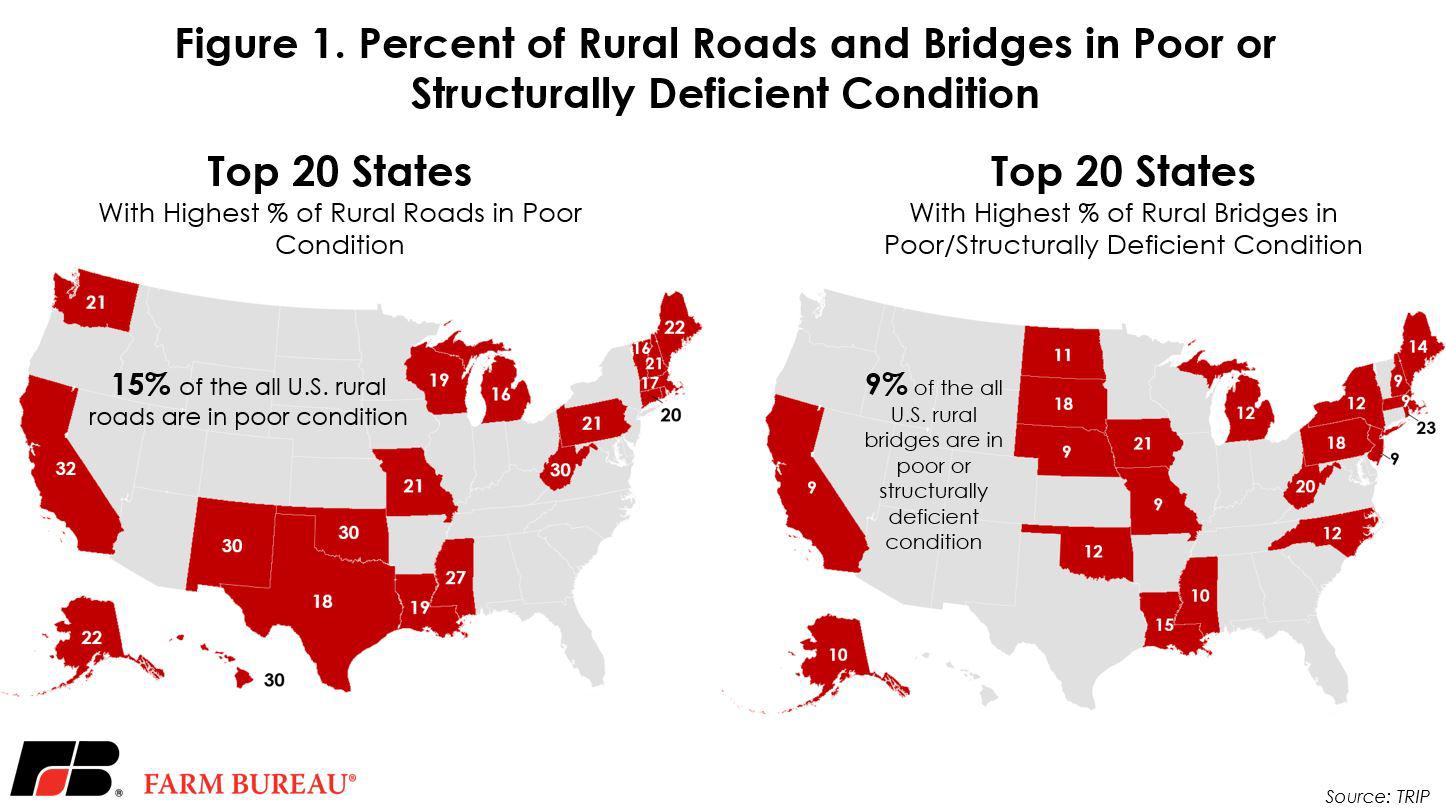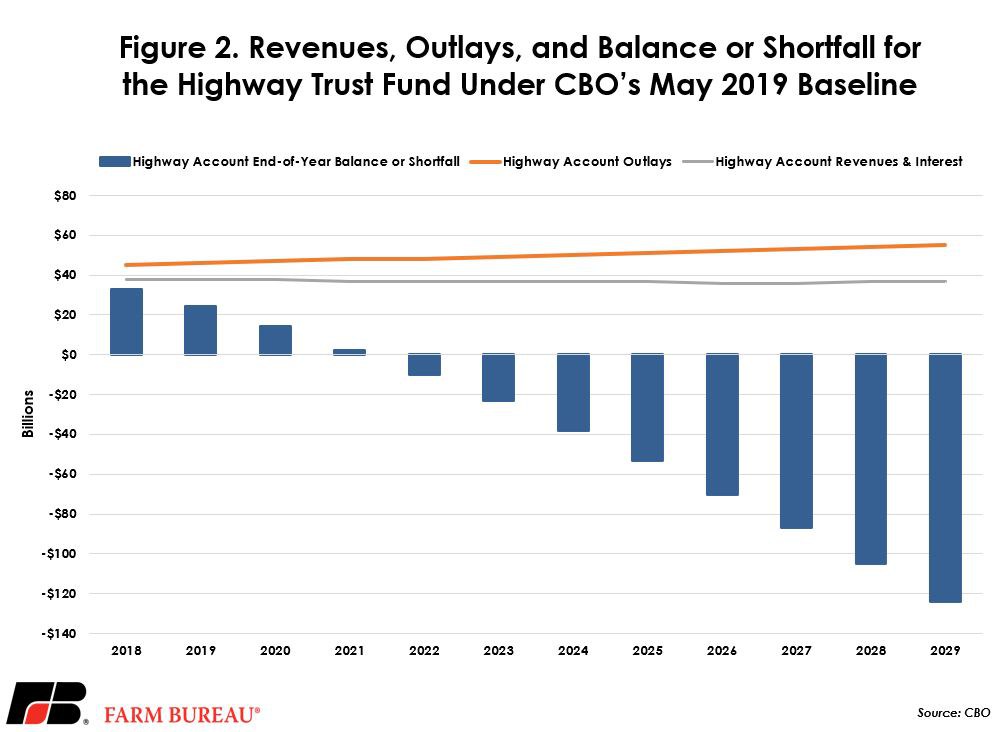Trucking Along: Where Rural Roads Are and Where They Are Going
Megan Nelson
Economic Analyst

photo credit: AFBF Photo, Morgan Walker
Megan Nelson
Economic Analyst
According to USDA, trucking carries 70% of agricultural and food products and represents 30% of all ton-miles moved on U.S. transportation systems. As rural road and bridge conditions decline, further funding is necessary to ensure rural populations can efficiently transport the farm and ranch goods we all rely on while supporting their families and maintaining their quality of life.
This Market Intel will focus on current rural road conditions and where federal funding levels are, as lawmakers will be tasked with the challenge of designating funding for such a vital part of our economy.
Where Rural Roads Are
Rural roads, highways, and bridges lack the capacity to accommodate growing freight travel and fail in providing adequate levels of connectivity to many communities. To assess the condition of roads, the U.S. Federal Highway Administration utilizes the International Roughness Index. Pavement conditions are calculated based on surface deviations that impact vehicle suspension movement. The IRI is reported in units of inches-per-mile, describing how much vertical movement a standard passenger vehicle would experience. An IRI greater than 170 inches-per-mile is rated as poor, whereas an IRI less than 95 inches-per-mile represents a road in good condition.
According to TRIP, a national transportation research group, 15% of U.S. roads are in poor condition and 21% in mediocre condition. Bridges in poor or structurally deficient condition represent 9% of all rural bridges in the U.S. and are often restricted to lower weight vehicles or even off-limits completely, therefore closing off access to large vehicles and agricultural equipment.
In 2017, the 20 states with the highest percentage of roads in poor condition represent 38% of total cash receipts for all commodities. The two maps in Figure 1 illustrate the percent of rural roads and bridges in poor or structurally deficient condition and denotes the 20 states in each category with the highest percentage of roads or bridges in poor condition.

Federal Funding
As the primary source of federal financing for American highways and mass transit, the Highway Trust Fund consists of two accounts funding construction of highways and highway safety programs, as well as mass transit programs. The fund is financed by an excise tax on trucks and trailers, truck tires and fuel. The 18.4-cents-per-gallon fuel tax accounts for about 90% of the fund. The majority of these funds are transferred to states by formula and competitive grant programs for projects the states deem necessary. Federal spending accounts for about 25% of all public spending on highways; the rest is supplied primarily by taxes levied by states and localities.
Where Rural Roads Are Going
Passing through committee in late July, the America’s Transportation Infrastructure Act of 2019 (S.2302) authorizes a record-funding level of $287 billion from the Highway Trust Fund over five years. According to the Senate Environment and Public Works Committee, the authorized level represents a 27% increase over the Fixing America's Surface Transportation Act, the federal transportation bill enacted in 2015, and is the largest highway bill in history. The legislation focuses investments on maintaining and repairing America’s roads and bridges to keep the economy moving forward. Keeping with previous authorizations, the majority of expenditures will be distributed to states by formula; however, the new bill would expand the flexibility and eligible uses of formula funds provided through the Highway Trust Fund.
The bill also amends the National Highway Freight Program, doubling the maximum number of highway miles a state may designate as critical rural freight corridors while also providing needed flexibility for lower population-density states to designate a maximum of 600 miles. Established in the FAST Act, the National Highway Freight Program works to improve the efficient movement of freight on the National Highway Freight Network including infrastructure and operational improvements. Amendments to Nationally Significant Freight and Highway Projects also raise the cap on eligible multimodal projects to 30% of the program.
The Funding Dilemma
Since 2008, however, spending out of the HTF has exceeded its revenue by $103 billion. This is in part due to a greater propensity for fuel efficient vehicles as well as the fuel excise tax which generates most of the fund has not been raised since 1993. To cover these additional expenditures, lawmakers authorized a series of transfers from the federal government’s General Fund to the HTF to avoid delaying payments to state and local governments. The 2015 FAST ACT provided $70 billion in General Fund transfers to the HTF to meet funding demand through 2020.
According to CBO’s May 2019 baseline report and continued trends, the HTF’s highway account alone will fall short by $10 billion in 2022, and that shortfall will climb to $124 billion by 2029, Figure 2. With the additional funds obligated under the America’s Transportation Infrastructure Act of 2019, a far more drastic budget shortfall is on the horizon without a substantial increase to HTF revenues.

Summary
Under current law, the HTF cannot run a deficit. Therefore, as the September 2020 expiration date for the FAST Act approaches, lawmakers will need to determine how to fund the newly authorized $287 billion as well as previous outlays.
American Farm Bureau voting delegates realize that while it may be politically unpopular, increasing HTF fees in order to accommodate increases in fuel economy, electric vehicles and inflation may be part of a solution. Additional revenue raised from the increased excise tax should be directed specifically to the Highway Account of the HTF for the construction and maintenance of roads and bridges.
Rural roads and bridges are a vital part of our nation’s transportation system and economy. Rural surface transportation networks face substantial challenges and deterioration, however, the investment in safe efficient, and well-maintained roads and bridges in rural America will have lasting effects on the overall health of the American economy.
Trending Topics
VIEW ALL